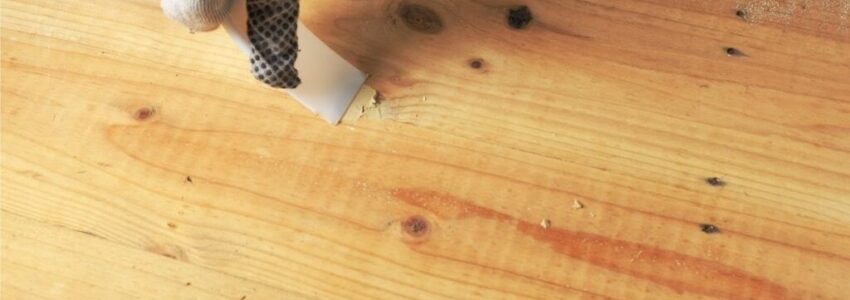What’s The Difference Between Wood Putty and Wood Filler?
- Get link
- X
- Other Apps

It’s not uncommon for woodworkers to deal with minor to more apparent imperfections in their wood pieces. Rotting, cracking, and scratching all pose problems to wooden surfaces, and it wouldn’t make much sense to replace entire furniture or installations just because of problematic portions. This especially rings true for DIY woodworkers who are particularly prone to making errors. But don’t fret; you won’t need to scrap what you’re working on because wood fillers and wood putty exist.
These two are integral products in solving cosmetic blemishes and imperfections on wood. Wood fillers and wood putty are equally well-known for their ability to patch wood up, so much so that they are used interchangeably. However, they are not the same; likewise, their uses and applications differ as well. This article will cover the primary differences between wood fillers and wood putty and when you should be using one over the other.

Wood Putty
Wood putty is often referred to as “plastic wood,” and is typically applied on wood surfaces that have been stained or varnished. The first main difference between wood putty and wood fillers comes in the material it is made with. Wood putties use synthetic materials like epoxy or polyurethane, making them stay relatively pliable even after drying and generally unsuitable for raw wood. This flexibility is very useful in filling small holes, cracks, and divots in the wood’s surface. Because wood putties are typically used on finished surfaces, they come in different tints to match such.
The following are some of the benefits of using wood putty for your project:
- Application – Wood putty is extremely flexible, affording you the luxury of patching up tiny cracks to large imperfections using a putty knife to cover wider areas. Once you’re satisfied with your work, you can simply wipe off the extra wood putty and wait for it to set. After drying, you’ll want to sand the surface to achieve a smooth finish.
- Color Combinations – As previously mentioned, wood putty comes in different tints to match or contrast the wood surface you are working with. Of course, you’ll generally want to keep the shade in line with the wood to avoid drawing too much attention to the imperfection.
- Long-lasting – When appropriately stored in a cool and dry place, the wood putty should last you up to 20 years. Even if you only use a small portion of it for your project, you can stow the rest of it for use on another project. Additionally, when you apply wood putty onto wooden furniture or fixtures, you can expect it to be durable enough that you won’t have to replace it.
Wood Fillers
Now, let’s move on to wood fillers. Wood fillers are typically a combination of wood byproducts as sawdust or wood dust, suspended in a binder, either water- or petroleum-based, that dries rock solid. This is another difference between wood fillers and wood putties. Wood fillers dry into a hard finish, whereas wood putties are more flexible. While most wood fillers turn out hard, this doesn’t actually add to the structural integrity of the wood it is applied on. Another key difference between the two is that wood fillers come untinted, as they are stained along with the rest of the wood after drying and sanding.
Water-based vs. Petroleum-based Wood Fillers
The two basic classifications of wood fillers are water-based and petroleum-based. Water-based wood fillers tend to be more crumbly in texture, but you can modify the consistency by adding water as desired. You can ably identify water-based fillers as water is indicated on the description as a solvent for cleaning up tools used.
On the other hand, petroleum-based wood fillers come in a much smoother texture and consistency than its counterpart. These fillers will also indicate chemical solvents as a means for cleanup too. Petroleum-based wood fillers are useful in sealing the outermost surface, protecting the wood against moisture and humidity, which could cause rotting.
These are some of the benefits of using wood fillers:
- Quick-drying – Contrary to wood putty, which may remain wet and flexible even after a few hours, wood fillers dry much quicker into a hardened finish. Wood fillers are perfect as a quick fix, as some kinds available in the market can dry in as little as 10 minutes.
- Ideal for Porous wood – Wood filler’s consistency makes it terrible for application on finished wood. However, it will take to raw, porous wood extremely well, readily filling holes and cracks.
When To Use Wood Putty or Filler
Both products can be significantly beneficial in repairing wood products when used appropriately. Because of its chemical makeup, wood putty is not entirely suitable for raw wood, causing more harm than good on most occasions. It could damage the surface of your wooden piece before you can sand and stain it.
Wood tends to shrink and expand depending on environmental factors; wood fillers dry up rock hard, lacking the flexibility to adapt to wood warping. Consequently, they can easily break. It would be best to apply wood fillers on indoor wood furniture to avoid further damage.
Hire The Timber Experts For Your Next Build
Here at Vintage & Specialty Wood we take quality seriously. So when it comes to timber framing or selling and installing reclaimed wood we don’t cut corners. Contact our team today to speak to a timber expert about what Vintage & Specialty Wood can do for your next project.
- Get link
- X
- Other Apps
Comments
Post a Comment